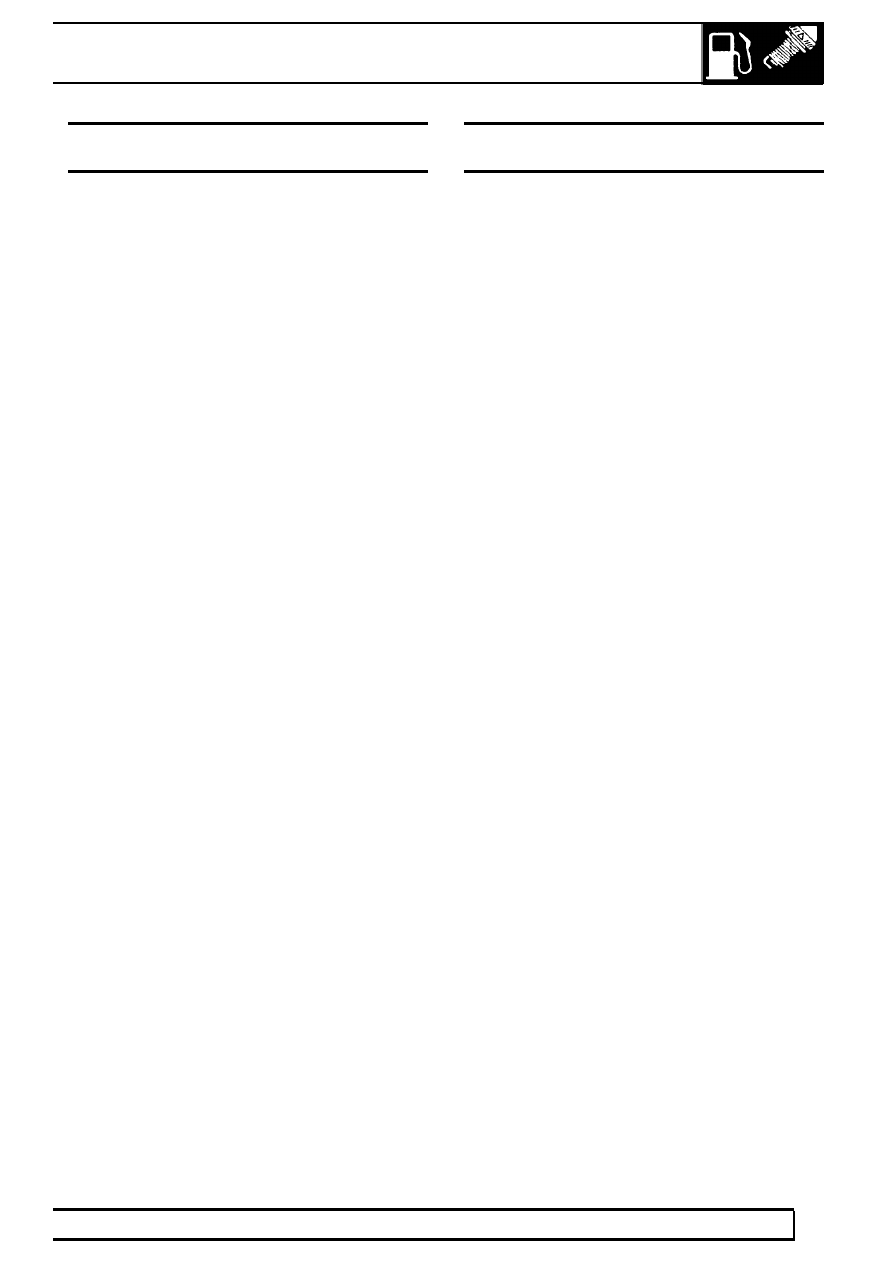Land Rover Discovery. Manual - part 49

EMISSION CONTROL
1
FAULT DIAGNOSIS
REV: 09/95
TESTING EVAPORATIVE EMISSION CONTROL -
PRE ADVANCED EVAPS
The following pressure test procedure is intended to
provide a method for ensuring that the system does
not leak excessively and will effectively control
evaporative emissions.
Equipment required.
Nitrogen cylinder (compressed air may be used to
pressure the system when there has NEVER been
fuel present in the fuel or evaporative control
systems).
Water manometer (0 - 30" H2O or more).
Pipework and a "T" piece.
Method.
1. Ensure that there is at least two gallons of fuel in
the petrol tank unless there has never been any
fuel in the system.
2. Disconnect, at the adsorption canister, the pipe
to the vapour separator.
3. Connect this pipe to the nitrogen cylinder and
the water manometer using the "T" piece.
4. Pressurize the system to between 26.5 and 27.5
inches of water, allow the reading to stabilize,
then turn off the nitrogen supply.
5. Measure the pressure drop within a period of 2
minutes 30 seconds. If the drop is greater than
2.5 inches of water the system has failed the
test. Note that a fully sealed system will show a
slight increase in pressure.
6. Should the system fail the test, maintain the
pressure in the system and apply a soap
solution round all the joints and connections until
bubbles appear to reveal the source of the leak.
7. Repeat the test and if successful, dismantle the
test equipment and reconnect the pipe to the
adsorption canister.
LEAK DETECTION PROCEDURE - ADVANCED
EVAPS
1. Connect TestBook to the vehicle and confirm
that the fault code(s) displayed relate to an
EVAP system fault.
2. Examine components in fuel and EVAP system
for damage or poorly connected joints.
3. Repair or replace components to rectify any
faults found, then reset the Check Engine light
using TestBook.
4. Carry out Drive Cycle,
See Drive Cycle -
Advanced EVAPS
5. Using TestBook confirm that the Evaporative
Loss Control (ELC) Inspection and Maintenance
(IM) flag has cleared. This procedure should
confirm that the ELC test was carried out during
the drive cycle and that the fault was cured.
6. If the IM flag is still shown, use TestBook to
interrogate the engine management system to
ascertain which of the following situations exists:
•
If a fault code is shown then further investigation
is required, proceed to the next step.
•
If the IM flag is still shown, but no faults are
indicated the conditions for the ELC check have
not been met and the drive cycle must be
repeated.
7. Connect the Leak Detection/EVAP Diagnostic
Station to the vehicle and carry out the
procedures given in the operating instructions
supplied with the equipment.
8. Rectify faults indicated by the Leak
Detection/EVAP Diagnostic Station and return to
step 4.